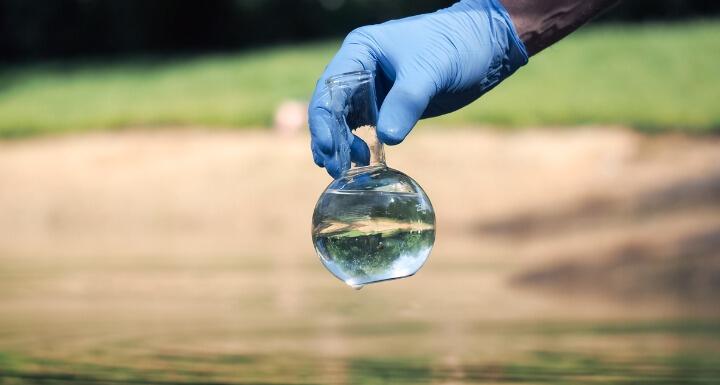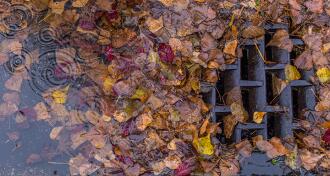
Introduction
On August 28, 2015, a new rule issued by the United States Environmental Protection Agency ("EPA") and the Army Corps of Engineers (the "Corps") became effective. The new rule is intended to redefine the term "waters of the United States" in an attempt to clarify what waters are protected under the 1972 Clean Water Act ("CWA"). Often referred to as the "Clean Water Rule," the revised rule establishes, and arguably expands, the scope of federal jurisdiction to regulate discharges into such waters.
The nearly 300-page rule was issued in response to years of uncertainty resulting from judicial decisions over federal government regulation of "wetlands." These decisions failed to clarify for the regulated public when a permit was required prior to engaging in certain activities. The new Clean Water Rule has the potential to impact a variety of economic sectors in North Carolina, such as land development, energy, and agriculture.
How Were the Waters Muddied?
The CWA prohibits the "discharge of dredged or fill material into the navigable waters" in the absence of a permit issued by the Corps. A permissible activity turns on the definition of the term "navigable waters," which was defined by the CWA as "waters of the United States, including the territorial seas." This vague definition resulted in years of litigation over what is included as a protected water.
The United States Supreme Court has long recognized that CWA protections extend beyond traditional navigable waters (which only need to be big enough to allow paddling a canoe) to include wetlands and other connected waterways. Beginning in 2001, however, the Supreme Court decided that the Corps had finally gone too far. In a handful of decisions, the Court held that the Corps had applied the term "waters of the United States" too broadly.
The Supreme Court's most recent decision on this topic, the 2006 case of Rapanos v. United States, found the Court split and lacking a true "majority opinion." Writing for four justices, Justice Scalia held that a water body must be relatively permanent in order to be federally regulated or what is commonly referred to as a "jurisdictional water." The other five justices agreed, but felt that jurisdictional waters could include some waters that are not navigable in the traditional sense. But, which non-navigable waters are covered? This is where the waters begin to muddy.
While concurring with the judgment in Rapanos, Justice Kennedy wrote his own opinion attempting to identify which traditionally non-navigable waters are, nevertheless, subject to CWA regulation. Justice Kennedy wrote that such a water must have a "significant nexus" to waters that are, or were, navigable in fact. This critical factor for determining CWA jurisdiction, Justice Kennedy stated, is whether the body of water either alone or in combination with similarly situated waters in the region "significantly affects the chemical, physical, or biologic integrity of other covered waters more readily understood as 'navigable.'" Following Rapanos, Justice Kennedy's "significant nexus" test became the recognized standard for the Corps to identify "waters of the United States."
The Corps has applied the significant nexus test to obvious wetlands, to waters that are distant from a main navigable watercourse, and to areas that are "wet" only part of the year. As a result, many property owners have been surprised to learn that their desired activity requires a permit. This case by case process for making such determinations has been an unsatisfactory experience for the Corps and the regulated community alike.
Therefore, the EPA and the Corps (the "Agencies") authored the Clean Water Rule for the stated purpose of simplifying and clarifying the process. By essentially codifying Justice Kennedy's "significant nexus" test, the Agencies claim this new "bright line" test for jurisdiction reduces the need for, and frequency of, case by case analysis. Skeptics scoff, claiming that the Clean Water Rule actually expands CWA jurisdiction rather than simply clarifying it. Which of these viewpoints is correct remains to be seen.
Which Waters Receive Protection Under the Clean Water Rule?
Certain broad categories of waters that historically have been considered jurisdictional by the Agencies remain regulated. These include traditional navigable waters, interstate waters, and territorial seas. Additionally, the Clean Water Rule explicitly makes impoundments jurisdictional waters.
The Agencies added "tributaries" and "adjacent waters" to the list of waters that also are now jurisdictional by rule. "Tributaries" are newly-defined by the Clean Water Rule as:
- Having the physical indicators of a bed, bank, and ordinary high water mark created by water flowing through an area; and,
- Contributing flow to a traditional navigable water, interstate water, or territorial sea.
Interestingly, the definition of tributary does not take into consideration the origin, duration, frequency, or volume of flow of water, which may subject some ephemeral or intermittent streams to federal jurisdiction without a significant nexus determination by the Corps.
The inclusion of "adjacent waters" also exposes the Clean Water Rule to critics' accusations of jurisdictional expansion. The Clean Water Rule builds on existing regulations to include those adjacent waters or wetlands "bordering, contiguous, or neighboring" jurisdictional waters without a significant nexus determination. Although the Agencies deemed "bordering" and "contiguous" as already well understood, they did define "neighboring" waters utilizing the following geographic criteria:
- Within 100 feet of the ordinary high water mark of a traditional navigable water, interstate water, territorial sea, impoundment, or tributary; or,
- Within the 100-year floodplain (but not more than 1,500 feet from the ordinary high water mark) of a traditional navigable water, interstate water, territorial sea, impoundment, or tributary; or,
- Within 1,500 feet of the high tide line of a traditional navigable water, interstate water, territorial sea, impoundment, or tributary.
Adjacent waters are jurisdictional if any portion of the water is located within one of these distance thresholds.
All other waters will undergo the significant nexus analysis to determine if alone, or in combination with other waters similarly situated within the region, they significantly affect the chemical, physical, or biologic integrity of a traditional navigable water, interstate water, or territorial sea. Certain waters will automatically be subjected to the analysis if they fall within any one of the following three categories:
- Waters within certain defined categories of waters, such as prairie potholes, Carolina and Delmarva Bays, pocosins, western vernal pools, and Texas coastal prairie wetlands (of which only Carolina Bays and pocosins can be found in North Carolina);
- Waters located within the 100-year floodplain of a traditional navigable water, interstate water, or the territorial sea; or,
- Waters within 4,000 feet of the high tide line or ordinary high water mark of a traditional navigable water, interstate water, or the territorial sea, or a water that is an impoundment or tributary.
Although the definition of "waters of the United States" under the Clean Water Rule appears to be a broad catchall, there are still certain limited exceptions:
- Waste treatment systems designed to meet requirements of the CWA;
- Certain ditches such as ephemeral flow ditches that are not a relocated tributary nor excavated in an existing tributary; intermittent flow ditches that are not a relocated tributary, excavated in existing tributary, or drain wetlands; and ditches that do not flow directly or through another water into a traditional navigable water, interstate water or territorial sea;
- Artificial lakes and ponds created on dry land for certain purposes;
- Artificially irrigated areas that would revert to dry land should watering stop;
- Water-filled depressions created on dry land incidental to mining or construction activities;
- Erosional features that do not meet the definition of a tributary;
- Stormwater control features and wastewater recycling structures constructed on dry land;
- Groundwater; and,
- Prior converted cropland.
The Future is Still Murky.
Although the Clean Water Rule more specifically identifies categories of waters, both protected and excluded, it remains to be seen whether the Agencies' promotion of less costly and more predictable permitting process comes to fruition. On the one hand, the Clean Water Rule creates no new permitting requirements - a permit is only needed to discharge into jurisdictional waters. Further, there is no effect on any existing jurisdictional determination, at least until the determination's 5-year validity expires. On the other hand, restrictions may be more prevalent. Waters that once had a 50/50 chance of being subject to protection under the CWA under a significant nexus analysis may automatically be covered under the specificity of the new Clean Water Rule.
The Clean Water Rule is already facing multiple legal challenges in federal district courts across the country due to the breadth of the new definitions. For example, the North Carolina Department of Environment and Natural Resources ("DENR") joined 10 states filing suit in federal court in Georgia seeking an injunction against enforcement of the new Clean Water Rule. Also, on August 27, 2015, a United States District Court in North Dakota granted a preliminary injunction stopping the Agencies from implementing the Clean Water Rule in 13 states. It is unclear what the impact of that injunction will have on the approximately 27 other pending lawsuits challenging the new rule, including the one in which DENR is a party. For now, unless another court grants a nationwide injunction, North Carolina and 36 other states are subject to the Clean Water Rule.
One thing is certain: activities in North Carolina will be affected, although the scope of changes in jurisdictional determinations will vary across the state, from the coast, replete with wetlands, to the mountains, where jurisdiction is less predictable. It remains to be seen whether the Clean Water Rule actually provides the consistency and clarity needed and called for by the regulated community. We are far from finality, and awareness and cautious planning will be critical to avoid liability.
--
© 2024 Ward and Smith, P.A. For further information regarding the issues described above, please contact .
This article is not intended to give, and should not be relied upon for, legal advice in any particular circumstance or fact situation. No action should be taken in reliance upon the information contained in this article without obtaining the advice of an attorney.
We are your established legal network with offices in Asheville, Greenville, New Bern, Raleigh, and Wilmington, NC.






